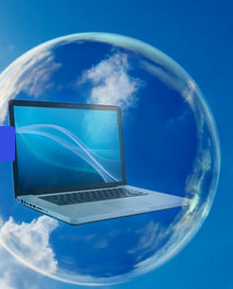Dot Com Bubble 2.0—–Lunacy By The Numbers
 Courtesy of David Stockman
Courtesy of David Stockman
Thanks to the money printing mania of the world’s central bankers, the Wall Street casino has gone global. Accordingly, mindless speculation and momentum chasing have reached new absurdities, as exemplified by the red hot roster of international high flyers below.
The financial data for the top name on the list, Twitter, is all that is required to remind us that once again markets are trading in the nosebleed section of history, rivaling even the madness of March 2000. Currently, Twitter (TWTR) is valued at $31 billion.That’s 18X revenue, but the catch is that the revenue in question is it’s lifetime bookings over the 18 quarters since Q1 2010.
When it comes to profits, the numbers are not nearly so promising! For the LTM period ending in June, TWTR booked $974 million of revenue and $1.7 billion of operating expense. That why “NM” shows up in its LTM ratio of enterprise value to EBITDA. It turns out that its EBITDA was -$704 million. In fact, its R&D expense alone was 83% of revenues.
That’s not the real fantasy, however. The sell-side hockey sticks indicate that TWTR’s forward multiple is only 86.6X projected EBITDA. Let’s see. At its current total enterprise value, this implies it will generate $350 million of positive EBITDA in the next 12 months—or a $1 billion favorable swing from the LTM number.
Just say its going to take some doing—not to say a miracle. During Q2 EBITDA was -$104 million compared to -$13 million in the year ago June quarter. So TWTR’s cash profit numbers are marching to the rear at a furious pace, but never mind. It’s EBITDA will soar skyward any moment now, making it 86.6X forward multiple completely rational….. Right.
Needless to say, this kind of speculative lunacy would never occur on the free market under a regime of honest price discovery. Yes, markets would discount at hefty multiples the future value of unusually promising and innovative enterprises with demonstrated capacity to convert revenues into profits.
Thus, a 5% free cash flow yield might make sense for an especially solid and promising new enterprise. In that event, a $31 billion market cap would require EBITDA less CapEx in the range of $1.6 billion. Alas, it is not clear that TWTR will ever even generate that much revenue, let alone free cash flow—of which, so far, it has generated exactly none.
So the list below is mainly a throw-back to the dot com mania. Today’s equivalent of eyeballs are now being discounted at absurd multiples. In the case of TWTR, its valuation is being driven by hundreds of millions of account holders—a significant fraction of which are fake.
And perhaps that is the appropriate metaphor. The wild valuations shown below are the product of a fake market—a pure gambling casino that is being fueled by a worldwide money-printing craze that has no precedent in recorded history.
The cynic is likely to say, so what? The gamblers will take their lumps, and probably soon enough. But its not that simple. The serial bubbles created by the central banks cause vast malinvestments and deformations—-economic distortions which confer stupendous, unearned windfalls on some and arbitrary, wanton losses and penalties on others.
Just consider the implications of TWTR’s LTM financials. Its SG&A expense for that period was $657 million or about $350,000 per average employee over the period. Needless to say, this tsunami of money is not being earned from sales; its being burned from the proceeds of serial capital raises that have accompanied the skyward ascent of TWTR’s valuation in the venture capital and post-IPO casino.
As for the windfalls, the gigantic, if temporary, gains of options holders are obvious enough. But how did the average price of a home in San Francisco rise to north of $1 million? How is it that moderate income tenants are being flushed out of rental units via every lawyer’s trick in the books? Why are traditional small businesses throughout the city closing-up shop owing to soaring commercial rents?
Any day now, this third and greatest bubble of the 21st century will reach a boiling point that even the mad money printers in the Eccles Building will not be able to sustain. Then there will be another thundering financial market crash—with collateral damage ricocheting willy-nilly in every direction along main street.
And that’s the real evil of Keynesian central banking. During the extended process of bubble inflation, the free market’s normal mechanisms which check unbridled speculation—such as short-selling—are disabled and eventually banished from the casino. Accordingly, bubbles grow to elephantine magnitudes under the malignancy of free money carry trades and one-way markets. In their wake, they channel massive flows of capital and real resources to blatantly uneconomic and often destructive purposes.
At the end of the day, free money is the mortal enemy of free markets. And free money is the catalyst for rank speculations that value imaginary cash flows at 87X…..that is, before the high flyers come crashing back to earth, like they always do.




